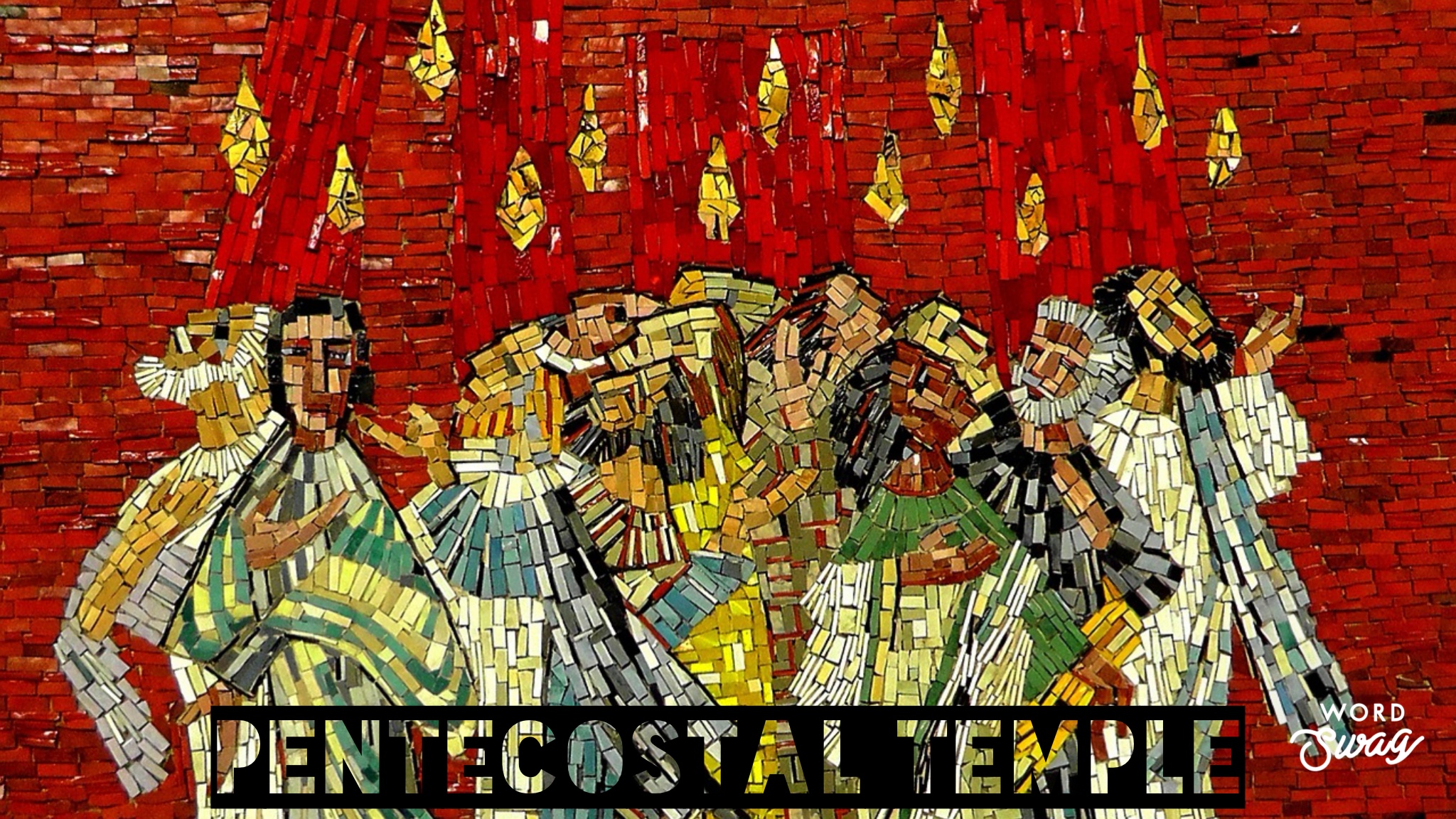When the construction of the Tabernacle was complete, God declared his approval by covering and filling it with his glory (Ex 40:34). Moses couldn’t enter the tent because of the glory cloud (Ex 40:35).
When the construction of Solomon’s Temple was complete, after Solomon prayed his prayer of dedication, fire came from heaven, lit the bronze altar, consumed the offerings, and the glory of Yahweh filled the temple (2Chr 7:1). The priests were unable to enter the house because the glory of Yahweh filled the house (2Chr 7:2).
When the construction of the post-exilic or restoration Temple was complete, there is no record of a historical event like the glory of God filling the Tabernacle or Solomon’s Temple. God promised that he would “fill this house with glory” so that “the latter glory of this house shall be greater than the former” (Hag 2:7, 9). God’s glory fills the post-exilic Temple of Ezekiel’s vision (Ezek 43:1-12), but no record exists of a priest or king praying and fire and cloud filling the Temple … until Pentecost.
God’s temple was no small matter in the history of the world. The historical temple projects embody our mission to take dominion of the world and shape it into the image of heaven. When Moses was on the mountain, he saw the heavenly pattern after which he constructed the Tabernacle (Ex 25:40). The Tabernacle was a “copy and shadow of heavenly things” (Heb 8:5). David received the heavenly blueprints for the Temple and passed them on to Solomon (1Chr 28:19). These structures were the image of heaven impressed upon the earth.
These temples were God’s house. But here is the thing about calling them “God’s house:” “House” can speak of an inanimate structure or a family. “The house of Israel” was the family of Israel. David wanted to build a house for God, but God told David that he would build David a house (2Sm 7:11). David’s house would be a family and, more particularly, a son. David’s son would be God’s son (2Sm 7:14), and God’s son would be his “house.” The house of God, the Temple, always represented God’s family. That’s why Paul and Peter both refer to the church as the Temple of God (1Cor 3:18; 1Pt 2:5; cf. also 1Cor 6:18). When the priests in the old creation shed and displayed blood on the furniture of the old temples, they were cleansing God’s house, his people.
God’s purpose for his temple was always to dwell with his people and be their God (Ex 29:45-46; Rev 21:3). Before Christ came, God maintained a distance, filling the temples with his glory because his people would be consumed by his fiery presence. However, the temples were types and shadows of the great filling of his people to come.
This happened on the Day of Pentecost. Jesus, God’s son and house, destroyed the old temple in his body through death and raised a new temple in his resurrection (Jn 2:19). He ascended to his Father’s right hand, and the Father declared his approval of the house by sending his glory to fill the house where the disciples were praying (Ac 2:2), filling the disciples themselves with the Holy Spirit (Ac 2:4), and lighting the altar fire on the heads of the disciples (Ac 2:3). Even with the old Temple building still standing in Jerusalem, God declared that the body of Christ, the church, is his true, new, and final Temple.
Everything the Temple was and foreshadowed is now realized in the church. As the Temple was a microcosmos, the church is God’s new creation. As the Temple united heaven and earth, so the church unites heaven and earth. As the Temple was the throne of God, now God rules the world from, through, and for the church (see Eph 1:19-23). As the Temple was the place where people drew near to God in worship, now people come to know and draw near to God in the church. As the Temple was God’s heavenly image pressed upon the earth, so the church is God’s heavenly image commissioned to colonize the earth with heaven’s culture. As the Temple was the dwelling place of God’s Spirit, so the church is now the place where the Spirit dwells, uniting us to Christ Jesus, the Father, and one another. As the Temple housed God’s word in the ark of the covenant, so the church is the steward of God’s word, the pillar and ground of truth (1Tm 3:15).
God declared at Pentecost that the church is his Temple, his house, his family. People will tell you that there is “more” outside of merely being a member of God’s family. You must seek a “second blessing,” “baptism of the Spirit,” or something else you didn’t receive when you were baptized and as you sit under the teaching of Scripture and participation in the Supper. In reality, being a part of the church, you have everything you need pertaining to life and godliness (2Pt 1:3). Don’t waste your time seeking all those extra “spiritual experiences.” God’s not keeping anything from you. Continue in faithfulness. You have everything you need.















